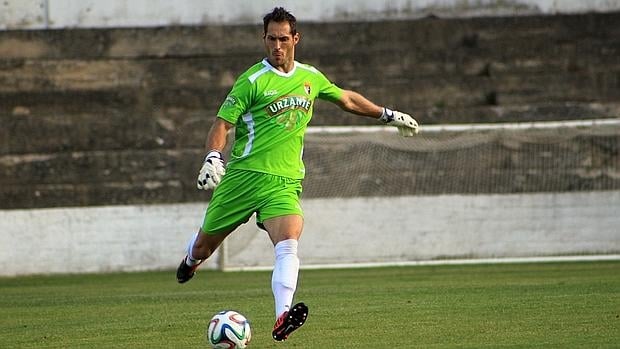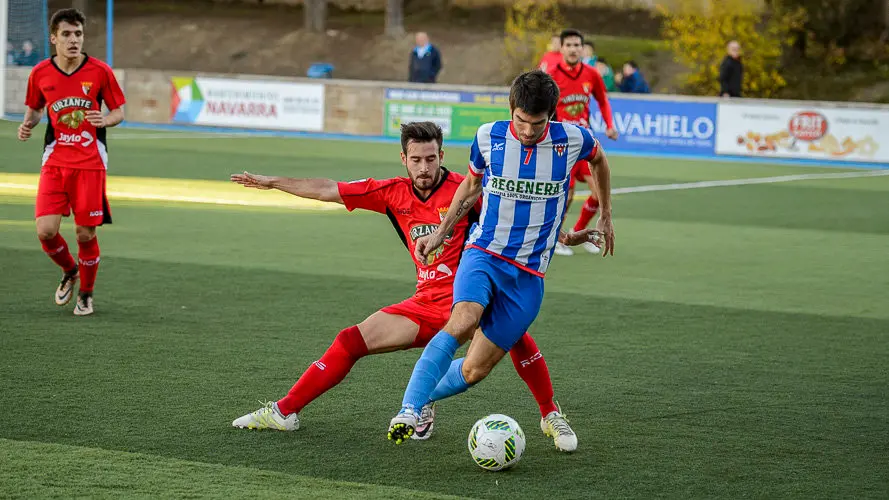The most important rivalry in Navarre

Only one club rules the Navarre region: Osasuna. The Pamplona-based club is the only Navarrese club to have reached the Segunda División, let alone the Primera División. Moreover, Osasuna is the only well-known Navarrese club. However, this does not mean that there are no other noteworthy clubs in the region. Two clubs, actually, fight every season to be the second-best club in Navarre: Izarra and Tudelano. Given that this is the most important derby of the region, Izarra – Tudelano tends to be called the derbi navarro.

West Versus South
Before anything, it’s important to stress that Izarra and Tudelano are no neighboring clubs nor share a city. Izarra is located in Estella-Lizarra, a town southwest of Pamplona, with around 13,000 inhabitants. In Estella-Lizarra, both Spanish and Basque are spoken – hence the name, making it a culturally interesting place.

Tudela, on the other hand, is located in the utmost south of Navarre, a zone where only Spanish is spoken. Tudela is the second-biggest city in the region and is very close to the Navarrese borders with Aragón and La Rioja, converting it into a locally important economic and logistic center.

In short, Estella-Lizarra and Tudela are different towns, regarding both language use, location, and inhabitants. Nevertheless, they are two of the most important Navarrese places behind Pamplona, and their respective clubs are the two most significant Navarrese football clubs behind Osasuna.

Izarra
In the 20s, football was practiced for the first time in Estella-Lizarra, and in 1924, Izarra Beti Aurrera was founded. Later, the club adopted the name Club Deportivo Izarra, which is the name as of today. In the 40s, the lizarratarrak debuted in the Tercera División, a competition in which they would play a lot.

In 1991, Izarra achieved a spot in the Segunda División B for the first time and was often present in this division during the 90s and the 10s. The best period in the club history lasted from 2015 until the present, in which they accumulated many consecutive seasons in the Segunda B and its successor, the Segunda Federación.

Even though Izarra is not a very successful club on a national scale, its youth academy is so. A famous player who started footballing at Izarra, is Juan Arza, who would become – and still is – the all-time top goalscorer of Sevilla FC. Other players who were formed at Izarra are Carlos Martínez, Rúper, and eternal Osasuna-captain Oier Sanjurjo. The most famous player, however, is Javi Martínez, having played in the shirt of Athletic Club, Bayern Munich, and the Spanish national team.

Tudelano
Tudelano has a different backstory. Many smaller clubs were founded in Tudela during the 20s and 30s, but none of those would progress enough to compete in a higher division. That’s why many Tudela-based clubs united in 1935 to create one representative club in the city: Club Deportivo Tudelano.

During the following decades, the tudelanos were competing very well in the Tercera División, almost reaching the Segunda División after their championship in 1955. Nevertheless, Tudelano would remain in the Tercera División for many years and also participated in the Segunda División B by 1977.

In 1991 and 2012, Tudelano joined the Segunda B for the second and third time, respectively. After the last promotion, the golden period in the club’s history began, as Tudelano would not return to the Tercera División. The opposite would be true: the tudelanos played the playoffs for promotion to the Segunda División in 2015-16 and even qualified for the first edition of the Primera RFEF in 2021.

An interesting story about Tudelano occurred in 2016. The club did not concede a single goal between the 7th of February and the 22nd of May for a total of 1.346 minutes, establishing a national record. Tudelano’s praised goalkeeper at the time was Mikel Pagola, with a past at Burgos, Salamanca, and Alavés.

The rivalry
The Izarra-Tudelano-rivalry is not known for its intensity, long history, or social importance, but for fighting to be the second-best club in Navarre. Nevertheless, it should be clear that the other three aspects are present in this Navarrese derby – even though to a lesser extent.

First of all, the intensity tends to be moderately high, as it is a rivalry without deeply-rooted social, political, or other pasts, but it still is a derby. Secondly, the derby has been played 78 times in the Tercera or above, meaning that this is a historic derby. Finally, the rivalry between Estella-Lizarra and Tudela might be minor, but they both represent a part of Navarre and have their differences.

The future of the navarrese derby
In short, the future of the derby of Navarre looks good. Izarra and Tudelano coincided in the league between 2015 and 2021 and again by 2022-23. At the end of that season, both club qualified for the next edition, which means we will not lose the derbi navarro just yet.

Sources
- http://lafutbolteca.com/club-deportivo-izarra/
- http://lafutbolteca.com/club-deportivo-tudelano-s-a-d/
- https://espanaestadios.com/2018/10/01/estella-lizarra-estadio-merkatondoa/
- https://espanaestadios.com/2018/09/04/tudela-estadio-ciudad-de-tudela/
- https://cdtudelano.com/historia/
- http://www.clubdeportivoizarra.es/historia/
- Borchers, L. (2021). GOLAZO. Self-published.
- Borchers, L. (2022). CARA O CRUZ. Self-published.
Leave a comment